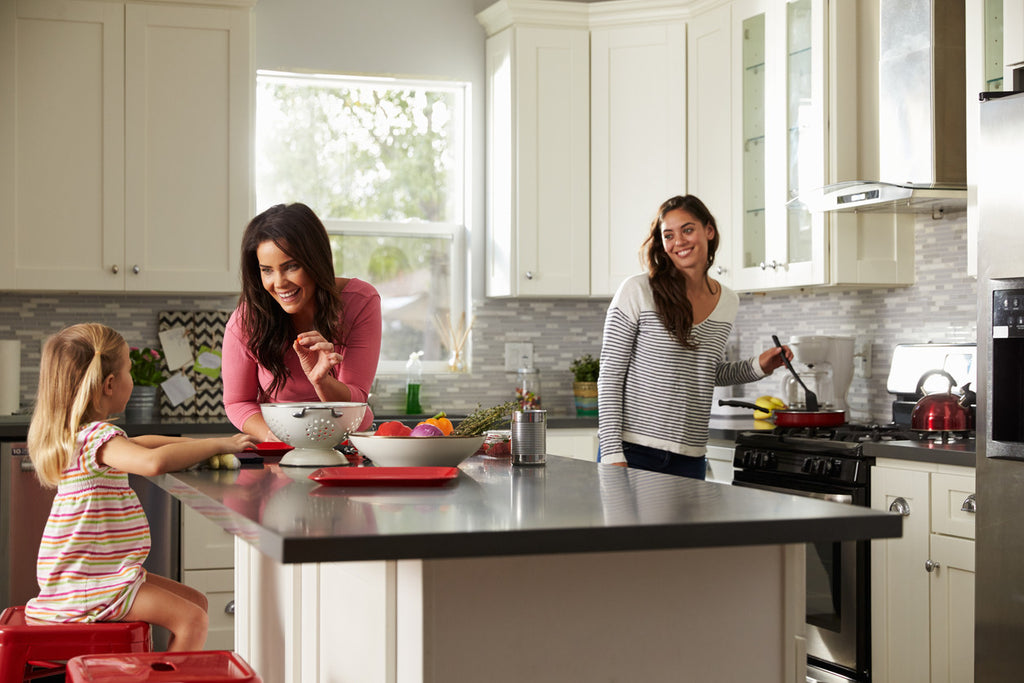ON A BUDGET: Building a Kitchen Island
💪 DIFFICULTY RATING: 40%
⏱ TIME: 1 to 2 Hours (+ Drying Time)
Becoming an increasingly popular must-have, kitchen islands allow the opportunity to utilise all of the space available to you. Whilst they can be on the costly side, we’ve put together a handy guide for how you can secure your own for next to nothing.
What you’ll be needing…
4 x L-Shaped Brackets (Available at Eurofit Direct)
8-16 Wood Screws (Available at Eurofit Direct)
Cordless Drill
Paint
As you can see from the above list, this is an incredibly simple yet fantastically inventive DIY project. All you’ll be needing to form the kitchen islands are shelf units and a slab of countertop.
The first thing to acquire are your shelf units. These will need to be wider than they are tall and around the same height or slightly taller than your other kitchen countertops.
TIP: the deeper and sturdier your shelf units are the better. Hardwood is perhaps the ideal material, though others are perfectly suitable.
Your shelf units can be secured for around £20. You’ll be needing two for this project so be sure to check that they are identical. TIP: you could even paint them so that they match the rest of your kitchen’s woodwork / design. This is best done whilst the units are separate from the final, finished island.
STEP 1: Putting the Shelf Units Together
Once you’ve found your shelf units, place them together back to back and measure out the dimensions of the combined top. This will give you the minimum size of the countertop that you’ll need.
Your counter-top should be slightly longer and wider than the overall dimensions of the shelf tops in order to give your finished kitchen island a lip, this will make it much easier to attach the countertop.
When it comes to choosing a countertop, wood is a much easier material to work with. TIP: You can even match it with your existing countertops if they’re also made from wood. You could use granite, however you’ll need to consult your local hardware store or a skilled tradesman as granite can be much harder to fit.
STEP 2: Adding the Countertop
Lay the countertop across the top of the two back to back shelf units and ensure that it is lined up correctly. If the countertop hangs unevenly it will ruin the look of the finished project so this step is vital.
Once you’re happy with the positioning of the countertop, attach the L-brackets to the sides of the shelf units so that the corner of the L-bracket fits into the corner created by the lip of the countertop. For this, you’ll need to use wood screws that are shorter than the thickness of the wood. Again using wood screws that are shorter than the wood is thick, attach the bracket to the bottom of the countertop lip. You’ll need to do this four times - twice on each side of the shelf units.
Once this is done, test how secure the countertop is, if there’s any wobble you may need to attach extra brackets to the front of the shelf units where there’s a suitable amount of wood. Repeat as necessary until the countertop is fully secured.
STEP 3: The Finishing Touches
Now to really make the kitchen island your own. Add an extra lick of paint to spice up the countertop or base, or perhaps laminate or tile the countertop if you want to use it for food preparation. Another interesting idea is to attach cupboard doors to the shelf units if you want to hide some things away, alternatively you can take out the centre shelves to create a little footwell and place stools or chairs around the island.
TIP: You can also attach hooks to the underside of the countertop lip that you can hang kitchen towels or perhaps a braid of garlic.
